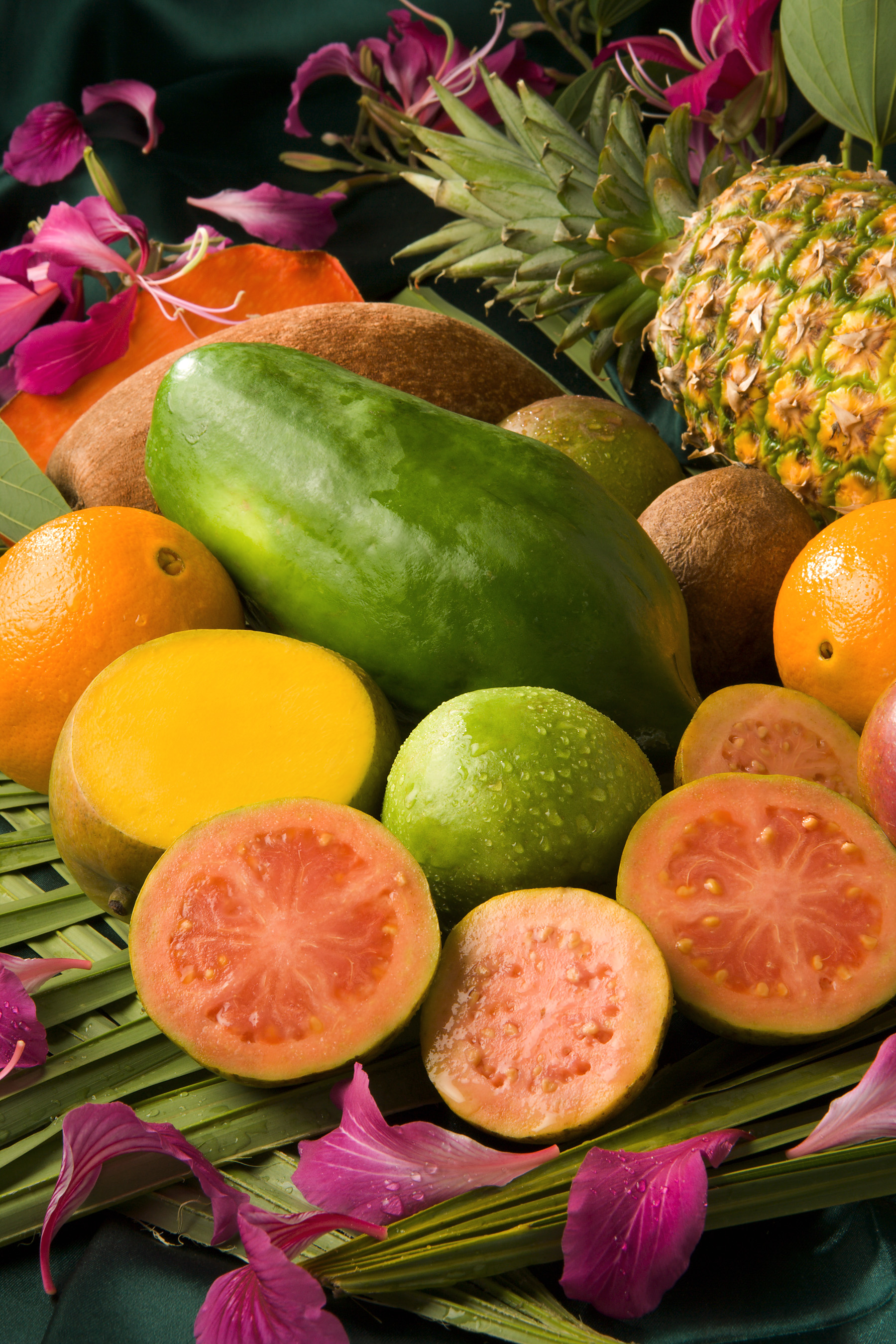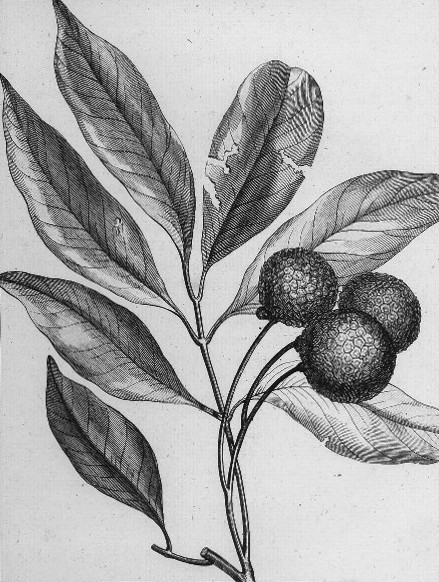|
Korlan
''Nephelium hypoleucum'', the korlan, is a tree in the family Sapindaceae. It is in the same genus as the rambutan and also closely related to several other tropical fruits including the lychee, longan, and guinep. The fruit In botany, a fruit is the seed-bearing structure in flowering plants that is formed from the ovary after flowering. Fruits are the means by which flowering plants (also known as angiosperms) disseminate their seeds. Edible fruits in particu ... is a round to oval drupe borne in a loose pendant cluster. External links Sorting Nephelium names hypoleucum Tropical fruit {{Sapindales-stub ... [...More Info...] [...Related Items...] OR: [Wikipedia] [Google] [Baidu] |
Sapindaceae
The Sapindaceae are a family of flowering plants in the order Sapindales known as the soapberry family. It contains 138 genera and 1858 accepted species. Examples include horse chestnut, maples, ackee and lychee. The Sapindaceae occur in temperate to tropical regions, many in laurel forest habitat, throughout the world. Many are laticiferous, i.e. they contain latex, a milky sap, and many contain mildly toxic saponins with soap-like qualities in either the foliage and/or the seeds, or roots. The largest genera are ''Serjania'', ''Paullinia'', ''Allophylus'' and '' Acer''. Description Plants of this family have a variety of habits, from trees to herbaceous plants to lianas. The leaves of the tropical genera are usually spirally alternate, while those of the temperate maples ('' Acer), Aesculus'', and a few other genera are opposite. They are most often pinnately compound, but are palmately compound in ''Aesculus'', and simply palmate in ''Acer''. The petiole has a swollen ba ... [...More Info...] [...Related Items...] OR: [Wikipedia] [Google] [Baidu] |
Wilhelm Sulpiz Kurz
Wilhelm Sulpiz Kurz (5 May 1834 – 15 January 1878) was a German botanist and garden director in Bogor, West Java and Kolkata. He worked in India, Indonesia, Burma, Malaysia and Singapore. This botanist is denoted by the List of botanists by author abbreviation, author abbreviation Kurz when Author citation (botany), citing a botanical name. Life He was born in Augsburg near Munich, and was a pupil of Carl Friedrich Philipp von Martius. He studied botany, mineralogy and chemistry at the University of Munich. Family misfortunes in 1854 led him to abandon studies and move to Holland where he worked as an apothecary. He then joined the Dutch Colonial Army medical service and sailed to Java in September 1856. He moved to Banka in March 1857 and in 1859 he joined an expedition to Bori, Sulawesi (Celebes). In September of the same year, he joined the Botanic Garden at Buitenzoorg where he had access to a large library and worked with botanists. In 1864 he was induced by Thomas Anderson ... [...More Info...] [...Related Items...] OR: [Wikipedia] [Google] [Baidu] |
Tree
In botany, a tree is a perennial plant with an elongated stem, or trunk, usually supporting branches and leaves. In some usages, the definition of a tree may be narrower, including only woody plants with secondary growth, plants that are usable as lumber or plants above a specified height. In wider definitions, the taller palms, tree ferns, bananas, and bamboos are also trees. Trees are not a taxonomic group but include a variety of plant species that have independently evolved a trunk and branches as a way to tower above other plants to compete for sunlight. The majority of tree species are angiosperms or hardwoods; of the rest, many are gymnosperms or softwoods. Trees tend to be long-lived, some reaching several thousand years old. Trees have been in existence for 370 million years. It is estimated that there are some three trillion mature trees in the world. A tree typically has many secondary branches supported clear of the ground by the trunk. This trunk typically ... [...More Info...] [...Related Items...] OR: [Wikipedia] [Google] [Baidu] |
Rambutan
Rambutan (; taxonomic name: ''Nephelium lappaceum'') is a medium-sized tropical tree in the family Sapindaceae. The name also refers to the edible fruit produced by this tree. The rambutan is native to Southeast Asia. It is closely related to several other edible tropical fruits including the lychee, longan, pulasan and guinep. Etymology The name "rambutan" is derived from the Malay word ''rambut'' meaning 'hair' referring to the numerous hairy protuberances of the fruits, together with the noun-building suffix ''-an''. Similarly, in Vietnam, they are called ''chôm chôm'' (meaning 'messy hair'). Origin and distribution The center of genetic diversity for rambutans is the Malaysian−Indonesian region. They have been widely cultivated in southeast Asia areas, such as Malaysia, Thailand, Myanmar, Sri Lanka, Indonesia Indonesia, officially the Republic of Indonesia, is a country in Southeast Asia and Oceania between the Indian and Pacific oceans. It consists of over ... [...More Info...] [...Related Items...] OR: [Wikipedia] [Google] [Baidu] |
Tropical Fruit
A tropical fruit one that typically grows in warm climates, or equatorial areas. Tropical fruits Varieties of tropical fruit include: * Acerola ( West Indian Cherry or Barbados Cherry) *Ackee *Banana *Barbadine (granadilla; maracujá-açu in Portuguese) *Brazil nut *Breadfruit *Canistel *Carambola (star fruit or five fingers) *Cashew *Chenet (guinep or ackee; pitomba-das-Guinas in Portuguese) *Cherimoya * Caimito (caimite; related to the yellow abiu - egg fruit) *Cocoa *Coconut *Coffee *Cupuaçu *Custard apple *Durian *Genipap *Governor's plum *Guaraná *Guava *Hog plum (taperebá in Portuguese) *Jackfruit *Longan *Lychee *Macadamia *Mamey sapote (mammee apple; abricó in Portuguese) *Mamoncillo *Mango *Mangosteen * Marang *Papaya *Passion fruit *Persimmon *Pewa (peach nut; pupunha in Portuguese) *Pili nut *Pineapple *Plantain *Pois doux (ice-cream bean; inga-cipó in Portuguese) *Pomegranate * Pommerac (Otaheite apple; Malay apple; jambo in Portuguese) *Pommecythere ( ... [...More Info...] [...Related Items...] OR: [Wikipedia] [Google] [Baidu] |
Lychee
Lychee (US: ; UK: ; ''Litchi chinensis''; ) is a Monotypic taxon, monotypic taxon and the sole member in the genus ''Litchi'' in the Sapindus, soapberry family, ''Sapindaceae''. It is a tropical tree native to Southeast and Southwest China (the Guangdong, Fujian, Yunnan and Hainan provinces), Assam, Vietnam, Laos, Myanmar, Thailand, Malaya, Java, Jawa, Borneo, Philippines and New Guinea. The tree is introduced into Cambodia, Andaman Islands, Bangladesh, East Himalaya, India, Mauritius and Réunion. The cultivation in China is documented from the 11th century. China is the main producer of lychees, followed by Vietnam, India, other countries in Southeast Asia, the Indian Subcontinent, Madagascar and South Africa. A tall evergreen tree, the lychee bears small fleshy Drupe, fruits. The outside of the fruit is pink-red, roughly textured, and inedible, covering sweet flesh eaten in many different dessert dishes. Lychee seeds contain Methylene cyclopropyl acetic acid, methylene cycl ... [...More Info...] [...Related Items...] OR: [Wikipedia] [Google] [Baidu] |
Longan
''Dimocarpus longan'', commonly known as the longan () and dragon's eye, is a tropical tree species that produces edible fruit. It is one of the better-known tropical members of the soapberry family Sapindaceae, to which the lychee and rambutan also belong. The fruit of the longan is similar to that of the lychee, but less aromatic in taste. It is native to tropical Asia and China. The longan (from Cantonese ''lùhng-ngáahn'' , literally 'dragon eye'), is so named because it resembles an eyeball when its fruit is shelled (the black seed shows through the translucent flesh like a pupil and iris). The seed is small, round and hard, and of an enamel-like, lacquered black. The fully ripened, freshly harvested fruit has a bark-like shell, thin, and firm, making the fruit easy to peel by squeezing the pulp out as if one were "cracking" a sunflower seed. When the shell has more moisture content and is more tender, the fruit becomes less convenient to shell. The tenderness of the sh ... [...More Info...] [...Related Items...] OR: [Wikipedia] [Google] [Baidu] |
Guinep
''Melicoccus bijugatus'' is a fruit-bearing tree in the soapberry family Sapindaceae, native or naturalized across the New World tropics including South and Central America, and parts of the Caribbean. Its stone-bearing fruits are edible. It is also called Bajan ackee, genip, guinep, genipe, ginepa, kenèp, quenepa, quenepe, quenette, chenet, skinup, talpa jocote, mamón, limoncillo, canepa, skinip, kenepa, kinnip, huaya, or mamoncillo. Taxonomy The genus ''Melicoccus'' was first described by Patrick Browne, an Irish physician and botanist, in 1756. This description was based on ''M. bijugatus'' trees which were cultivated in Puerto Rico. In 1760, Nikolaus Joseph von Jacquin described the first species in Browne's genus, which he named ''M. bijugatus''. In 1762 Linnaeus used a spelling variation of the name ''Melicocca bijuga''. Over the next two centuries, Linnaeus' spelling variation was used in almost all publications. A proposal was made in 1994 to conserve ''Melicocca'' o ... [...More Info...] [...Related Items...] OR: [Wikipedia] [Google] [Baidu] |
Fruit
In botany, a fruit is the seed-bearing structure in flowering plants that is formed from the ovary after flowering. Fruits are the means by which flowering plants (also known as angiosperms) disseminate their seeds. Edible fruits in particular have long propagated using the movements of humans and animals in a symbiotic relationship that is the means for seed dispersal for the one group and nutrition for the other; in fact, humans and many animals have become dependent on fruits as a source of food. Consequently, fruits account for a substantial fraction of the world's agricultural output, and some (such as the apple and the pomegranate) have acquired extensive cultural and symbolic meanings. In common language usage, "fruit" normally means the seed-associated fleshy structures (or produce) of plants that typically are sweet or sour and edible in the raw state, such as apples, bananas, grapes, lemons, oranges, and strawberries. In botanical usage, the term "fruit" also i ... [...More Info...] [...Related Items...] OR: [Wikipedia] [Google] [Baidu] |
Drupe
In botany, a drupe (or stone fruit) is an indehiscent fruit in which an outer fleshy part (exocarp, or skin, and mesocarp, or flesh) surrounds a single shell (the ''pit'', ''stone'', or '' pyrena'') of hardened endocarp with a seed (''kernel'') inside. These fruits usually develop from a single carpel, and mostly from flowers with superior ovaries (polypyrenous drupes are exceptions). The definitive characteristic of a drupe is that the hard, lignified stone is derived from the ovary wall of the flower. In an aggregate fruit, which is composed of small, individual drupes (such as a raspberry), each individual is termed a drupelet, and may together form an aggregate fruit. Such fruits are often termed ''berries'', although botanists use a different definition of ''berry''. Other fleshy fruits may have a stony enclosure that comes from the seed coat surrounding the seed, but such fruits are not drupes. Flowering plants that produce drupes include coffee, jujube, mango, oli ... [...More Info...] [...Related Items...] OR: [Wikipedia] [Google] [Baidu] |
Nephelium
''Nephelium'' is a genus of about 25 species of flowering plants in the family Sapindaceae, native to southeastern Asia. They are evergreen trees with pinnately compound leaves, and edible drupaceous fruit; one species, ''N. lappaceum'' (rambutan) is commercially important for its fruit. The genus is closely related to ''Litchi'' and ''Dimocarpus ''Dimocarpus'' is a genus of about 20 species of trees or shrubs known to science, constituting part of the flowering plant family Sapindaceae. They grow naturally in tropical south and Southeast Asia, Malesia, Papuasia and Australasia, includ ...''. ;Selected species References External linksSorting ''Nephelium'' names * * [...More Info...] [...Related Items...] OR: [Wikipedia] [Google] [Baidu] |
_W2_IMG_1899.jpg)







